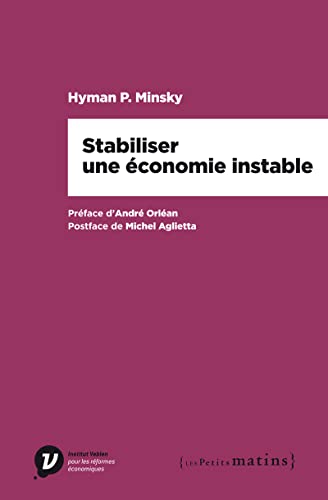What do you think?
Rate this book


“Mr. Minsky long argued markets were crisis prone. His 'moment' has arrived.” -The Wall Street Journal
In his seminal work, Minsky presents his groundbreaking financial theory of investment, one that is startlingly relevant today. He explains why the American economy has experienced periods of debilitating inflation, rising unemployment, and marked slowdowns-and why the economy is now undergoing a credit crisis that he foresaw. Stabilizing an Unstable Economy covers:
The natural inclination of complex, capitalist economies toward instability Booms and busts as unavoidable results of high-risk lending practices “Speculative finance” and its effect on investment and asset prices Government's role in bolstering consumption during times of high unemployment The need to increase Federal Reserve oversight of banksHenry Kaufman, president, Henry Kaufman & Company, Inc., places Minsky's prescient ideas in the context of today's financial markets and institutions in a fascinating new preface. Two of Minsky's colleagues, Dimitri B. Papadimitriou, Ph.D. and president, The Levy Economics Institute of Bard College, and L. Randall Wray, Ph.D. and a senior scholar at the Institute, also weigh in on Minsky's present relevance in today's economic scene in a new introduction.
A surge of interest in and respect for Hyman Minsky's ideas pervades Wall Street, as top economic thinkers and financial writers have started using the phrase “Minsky moment” to describe America's turbulent economy. There has never been a more appropriate time to read this classic of economic theory.
736 pages, Paperback
First published September 10, 1986